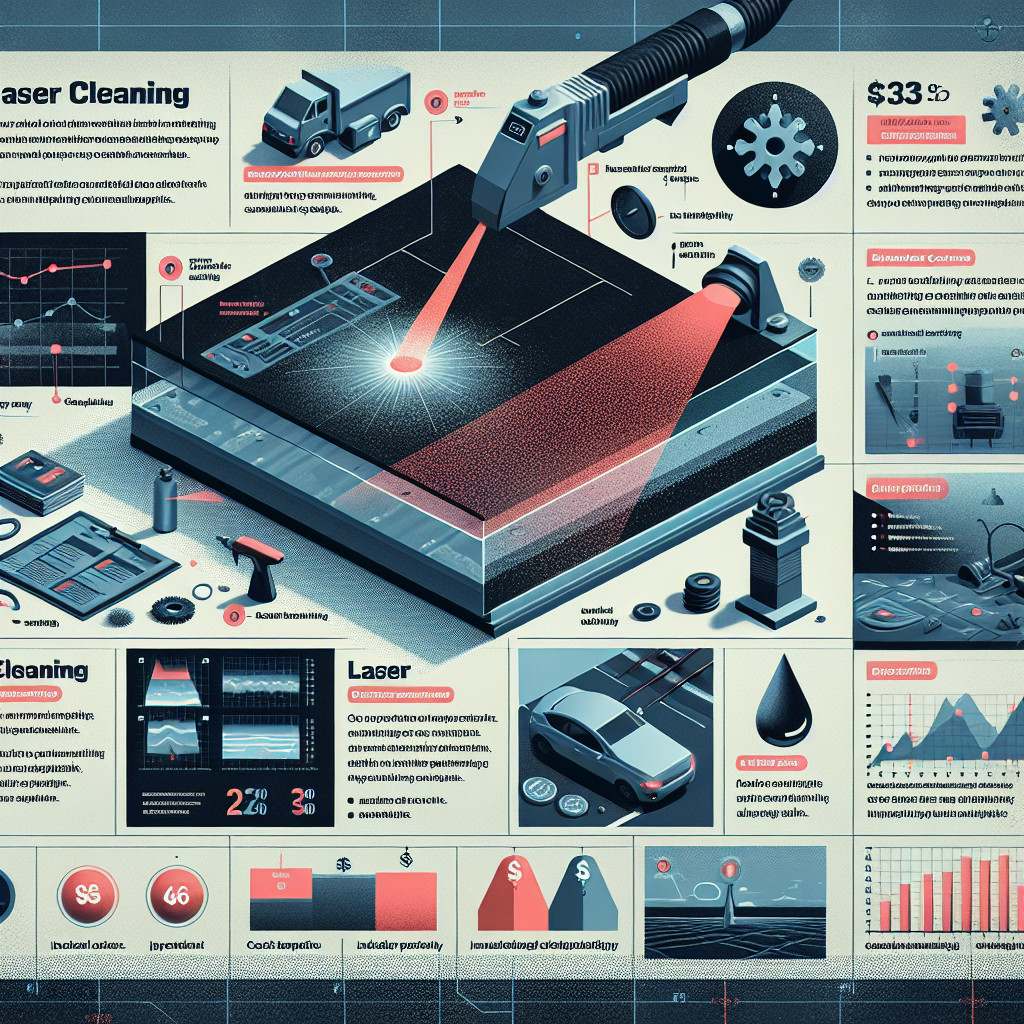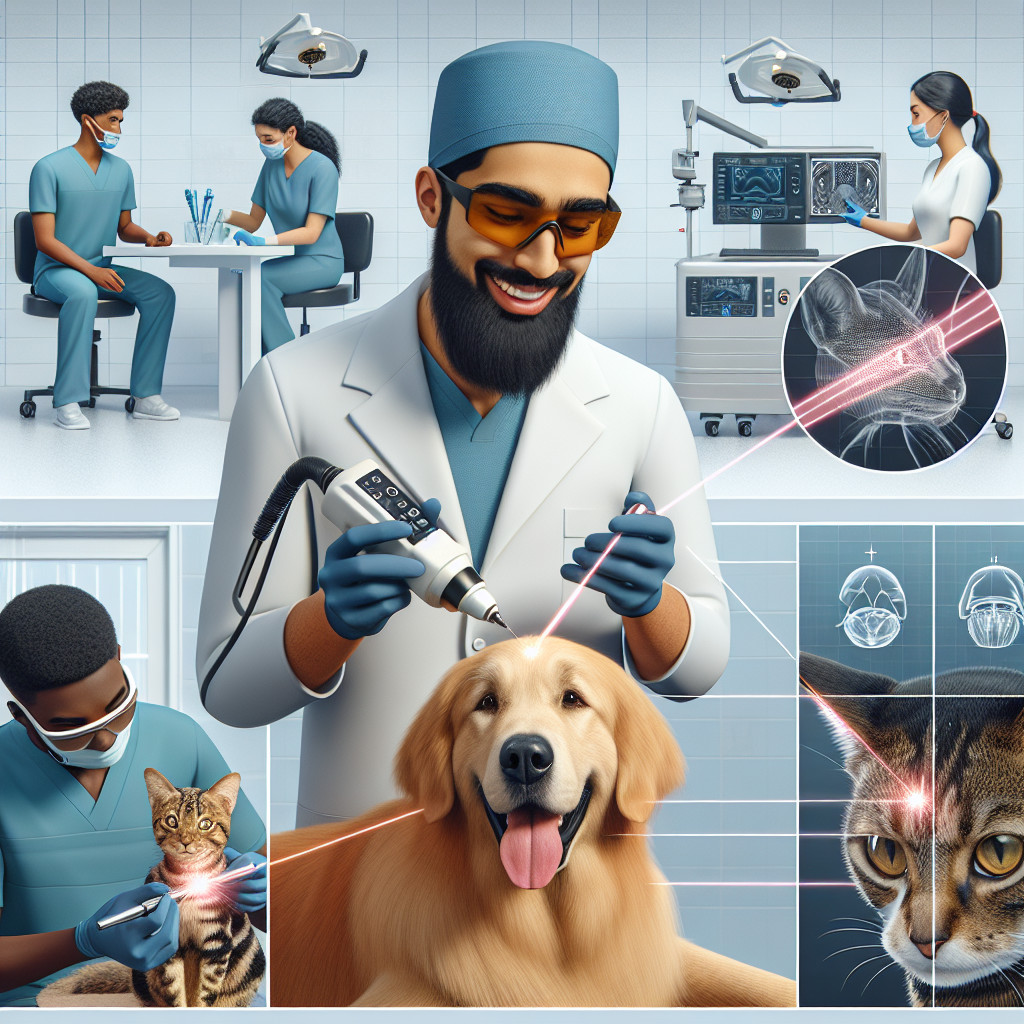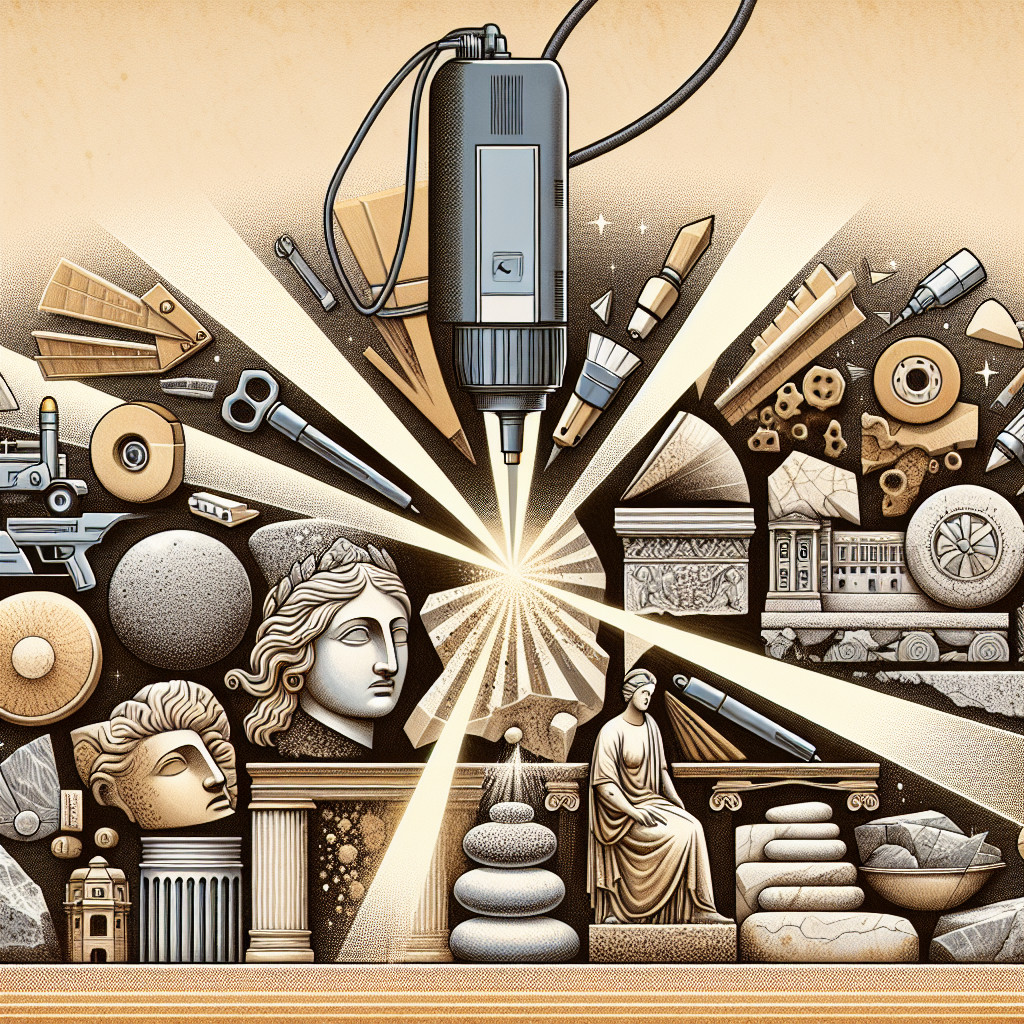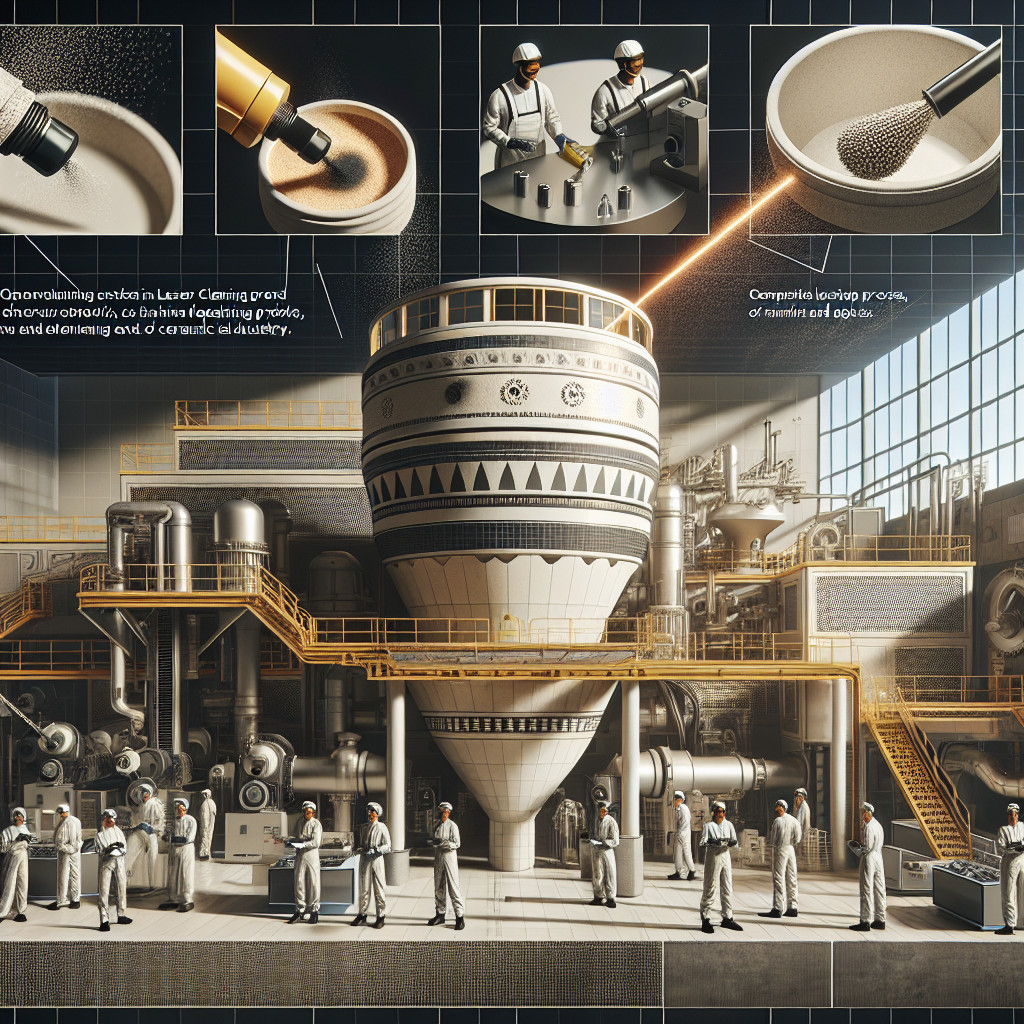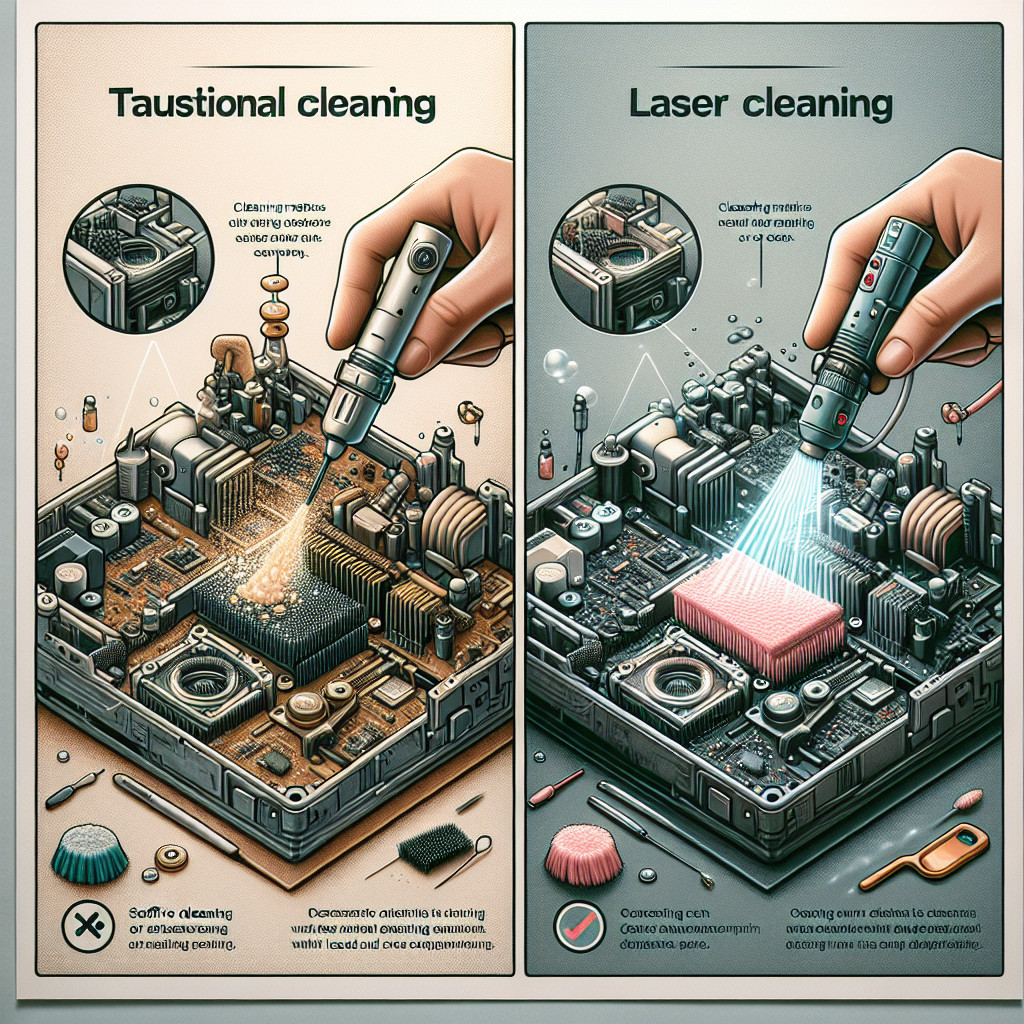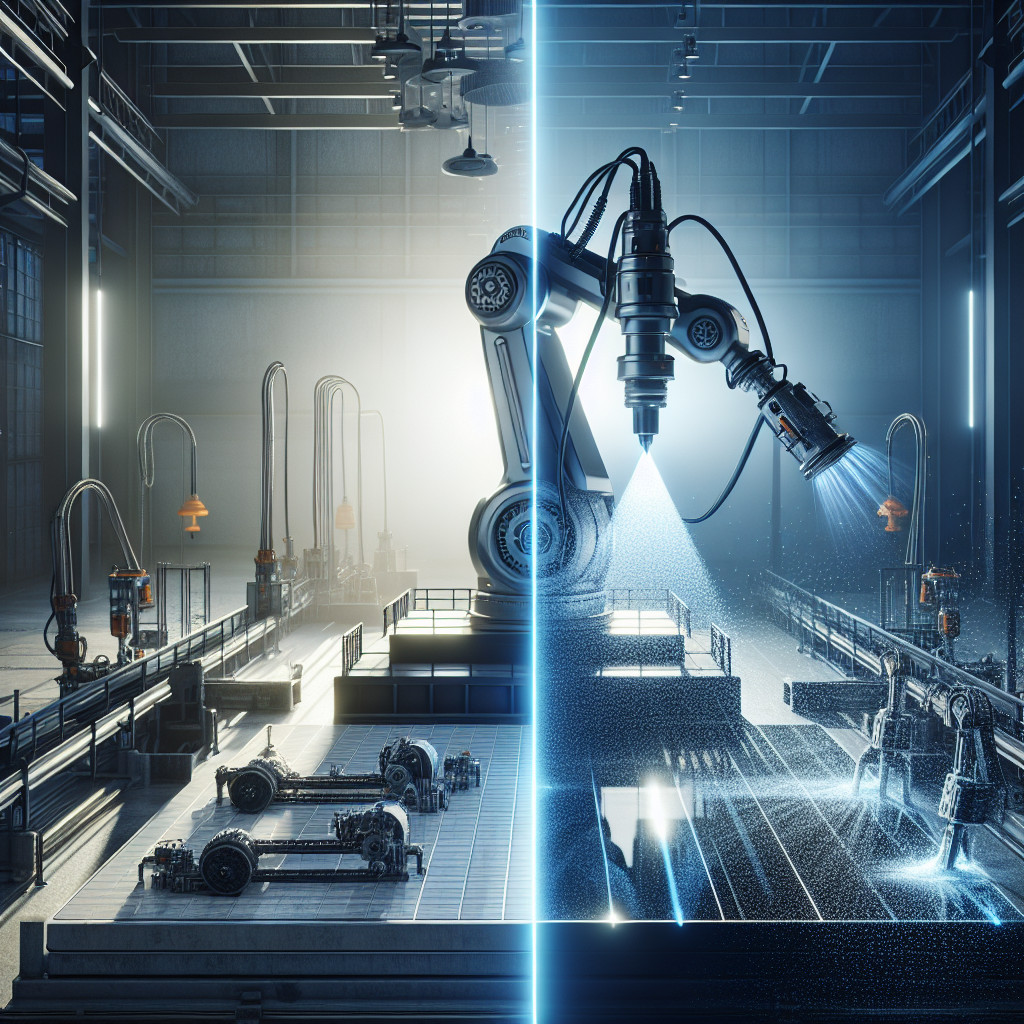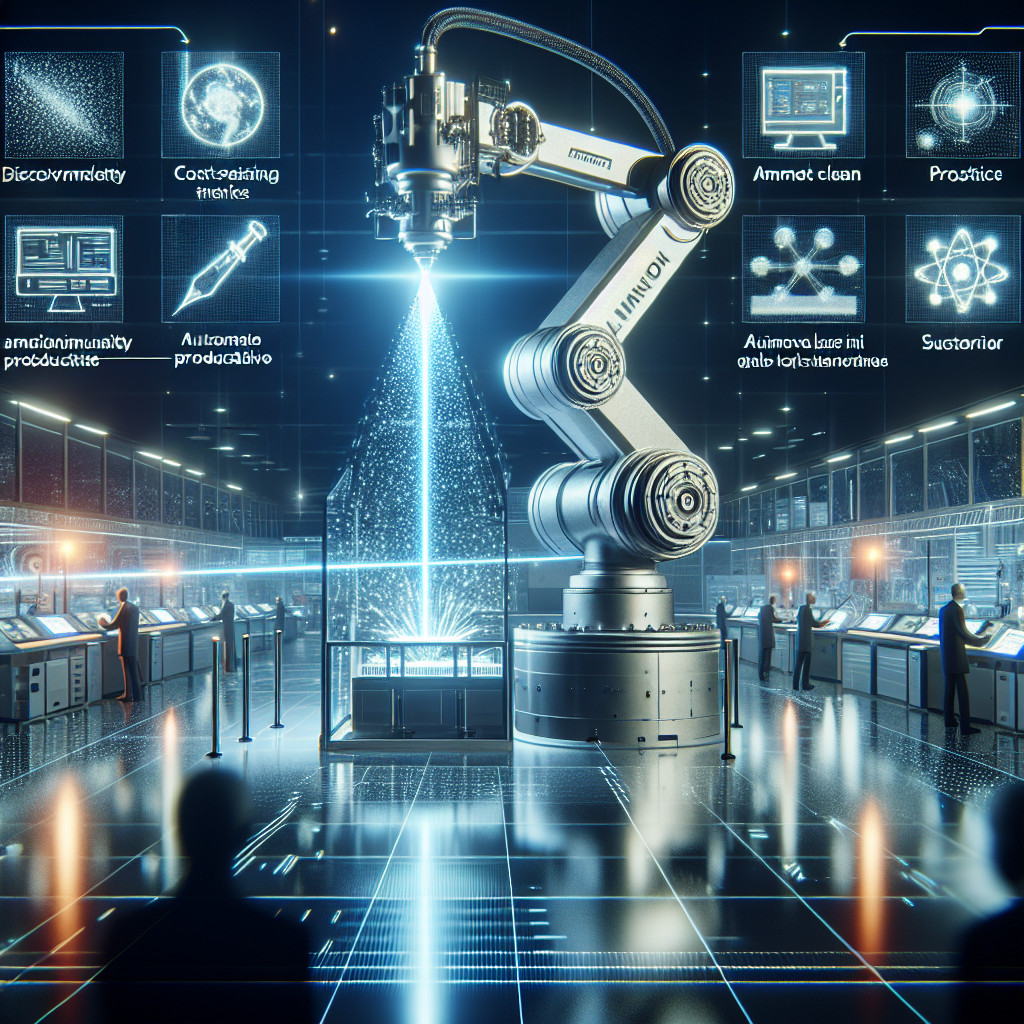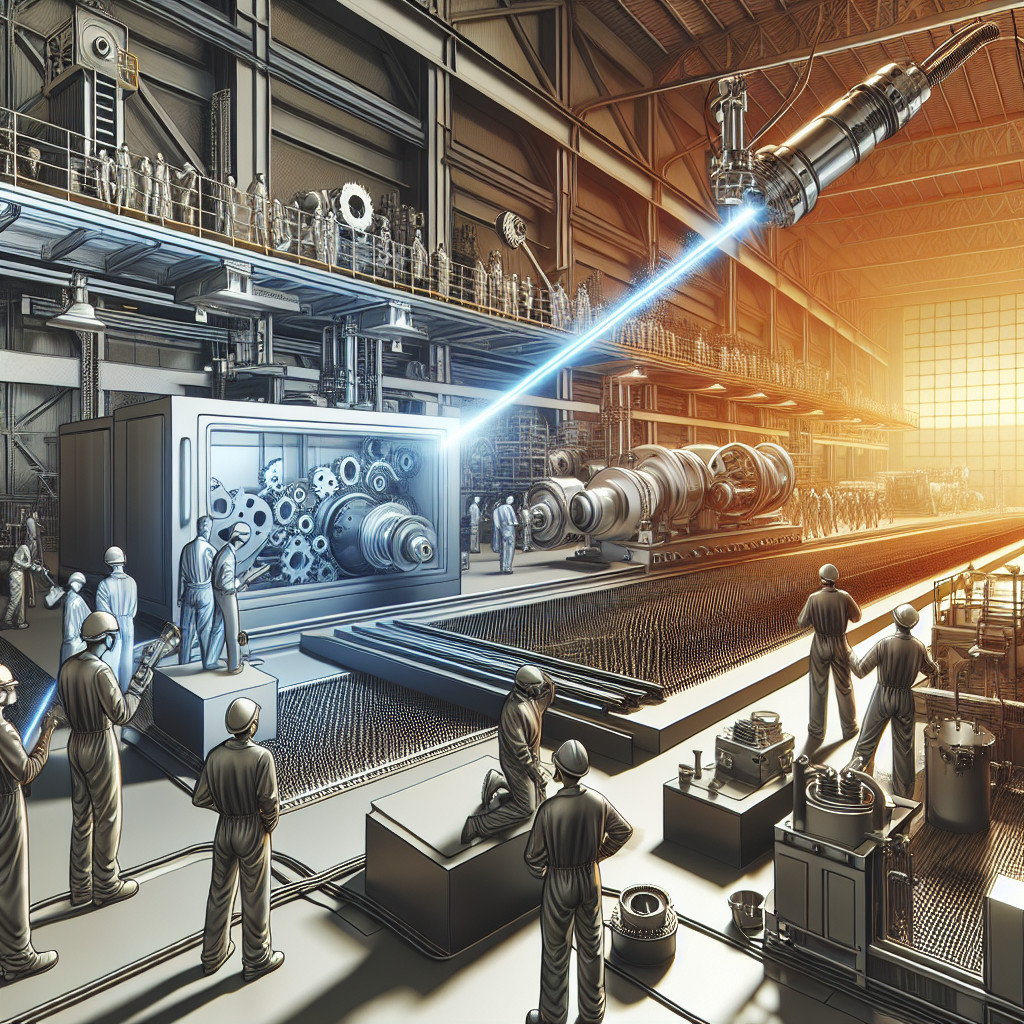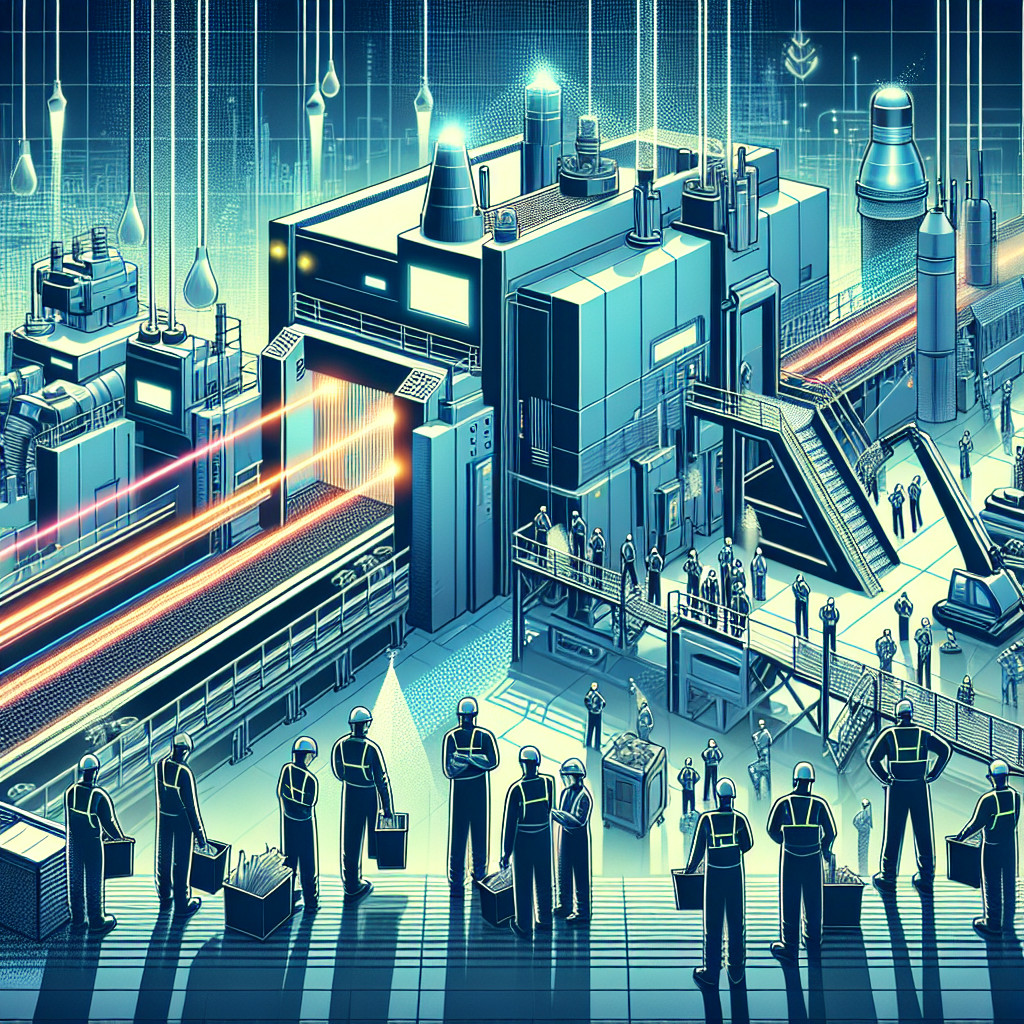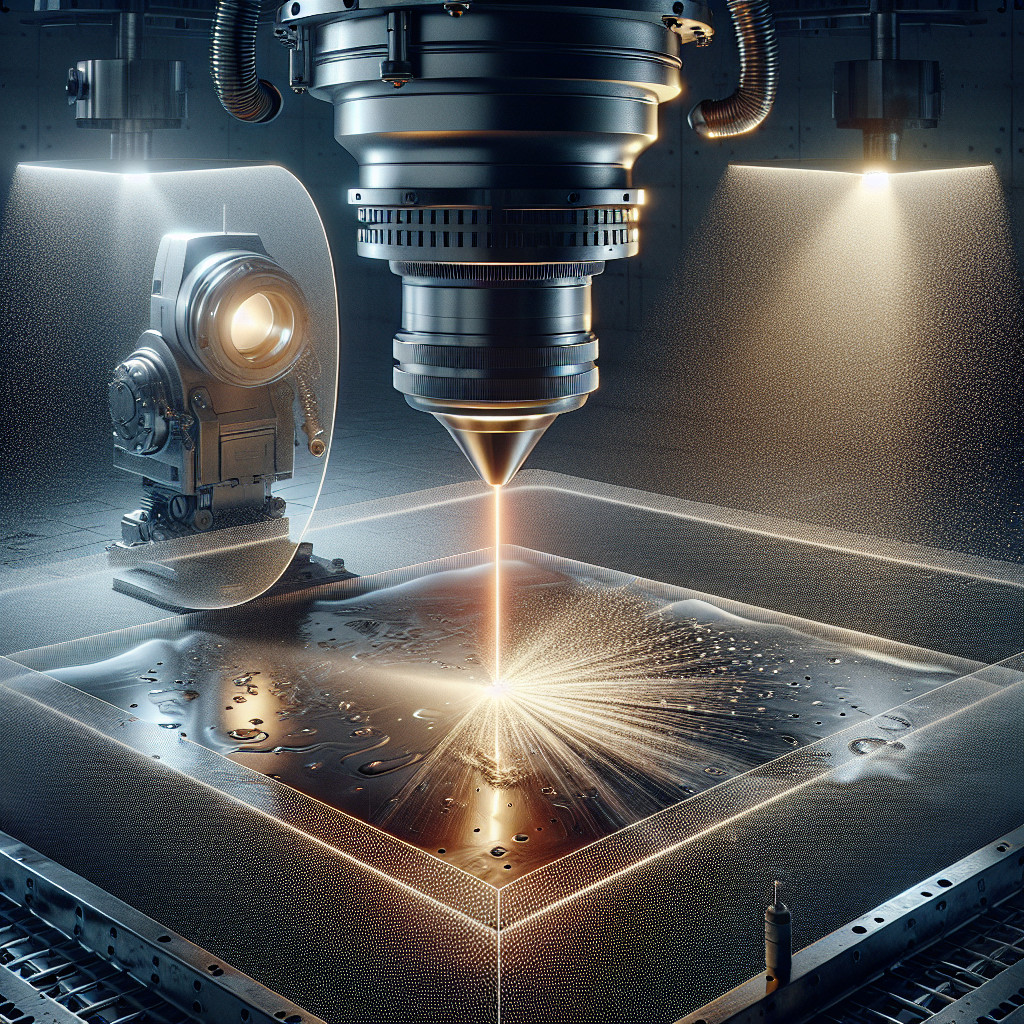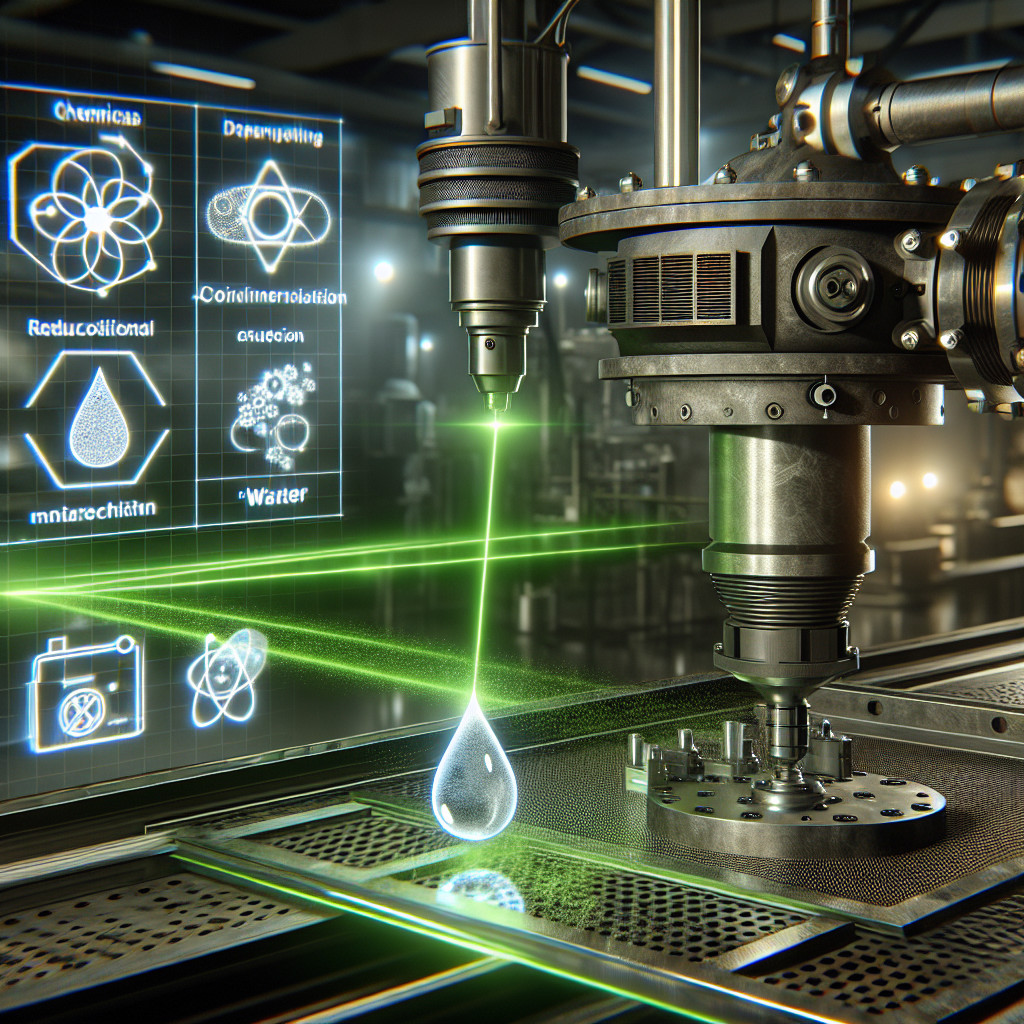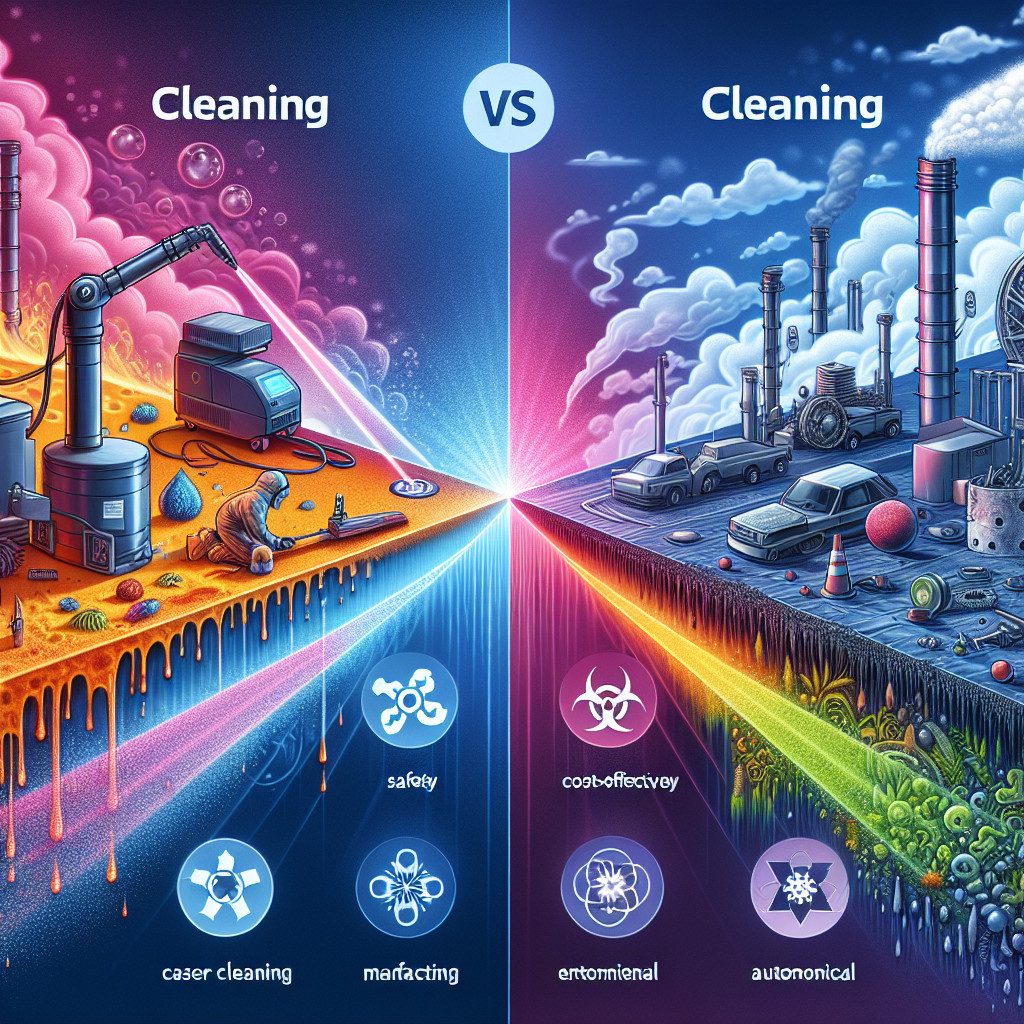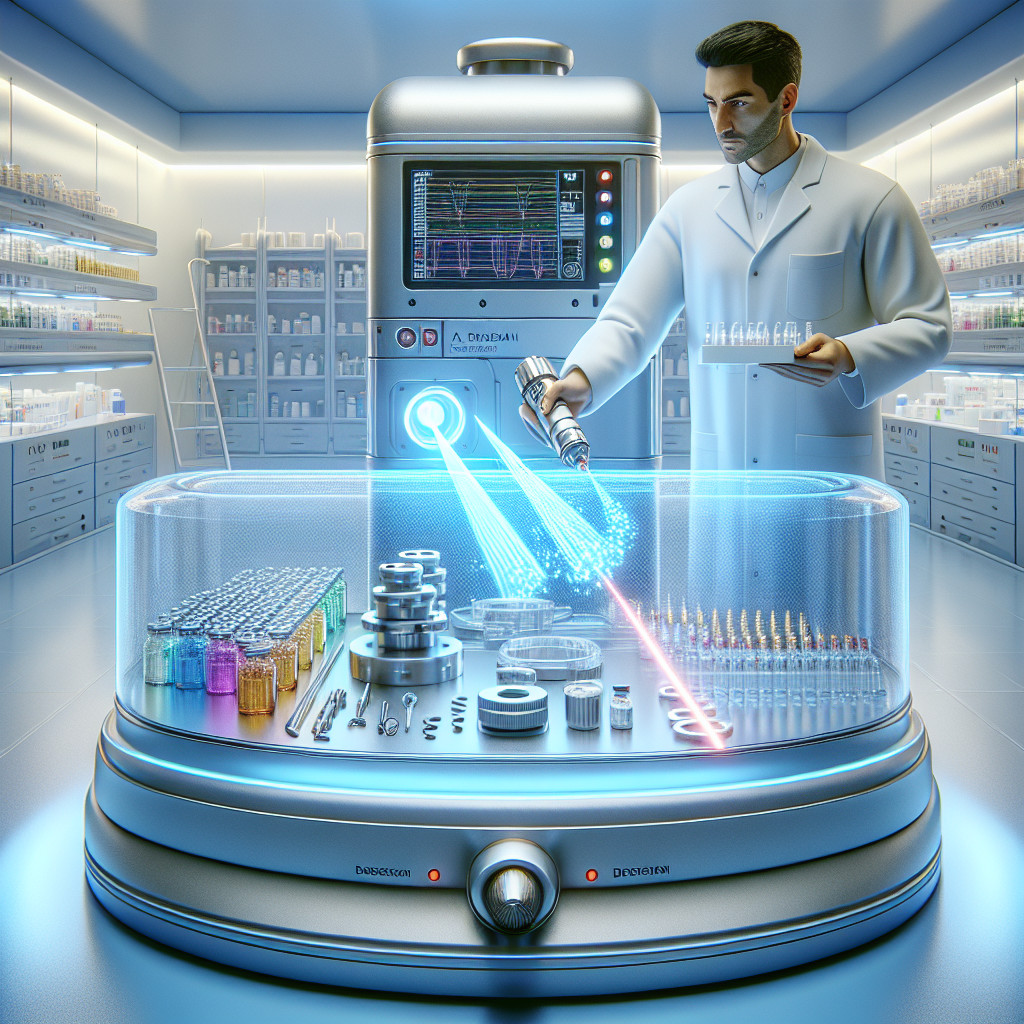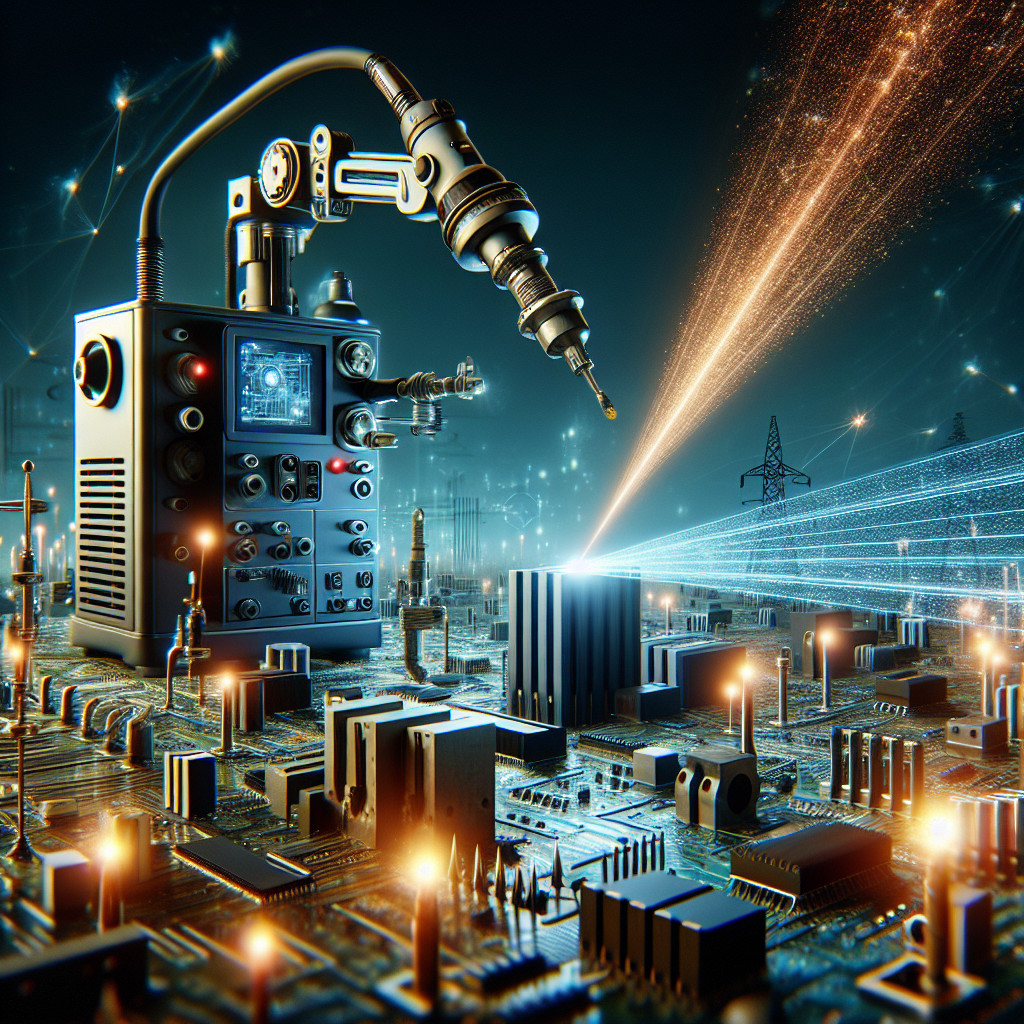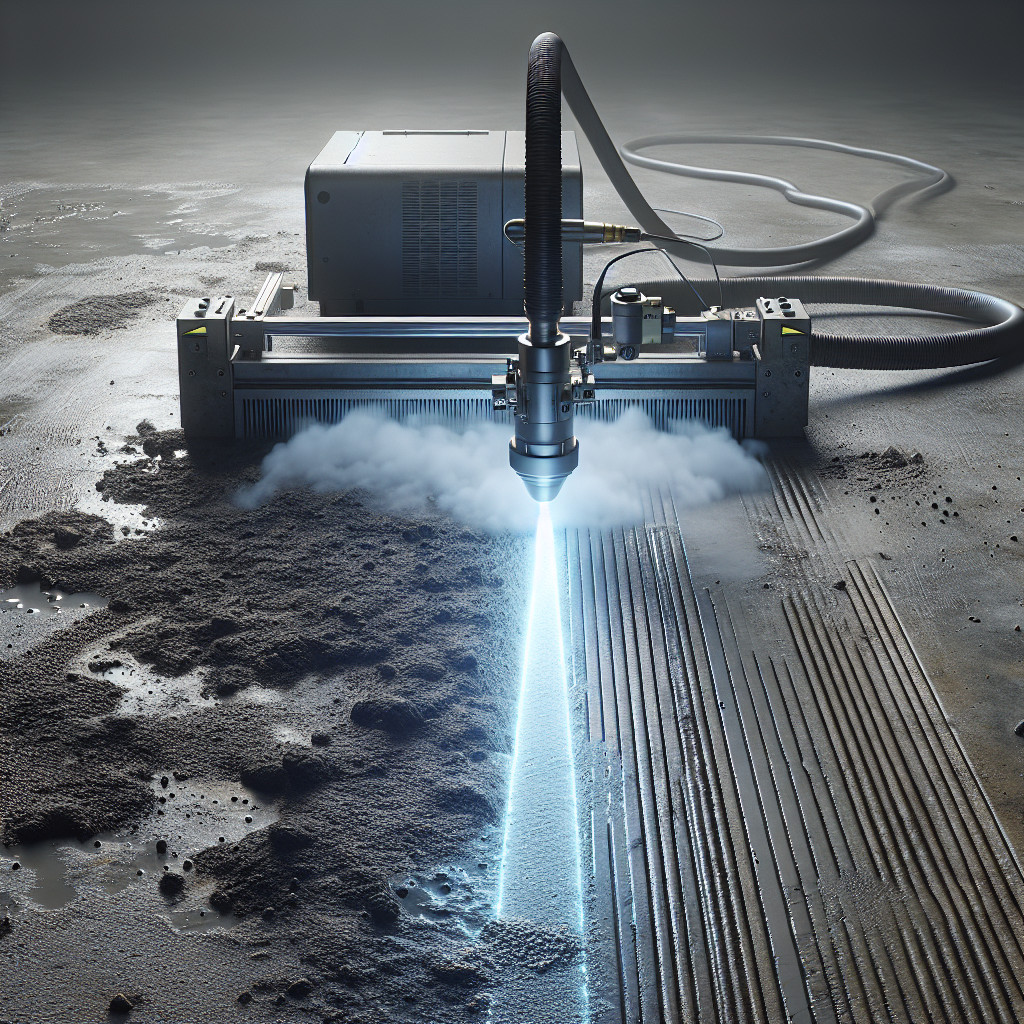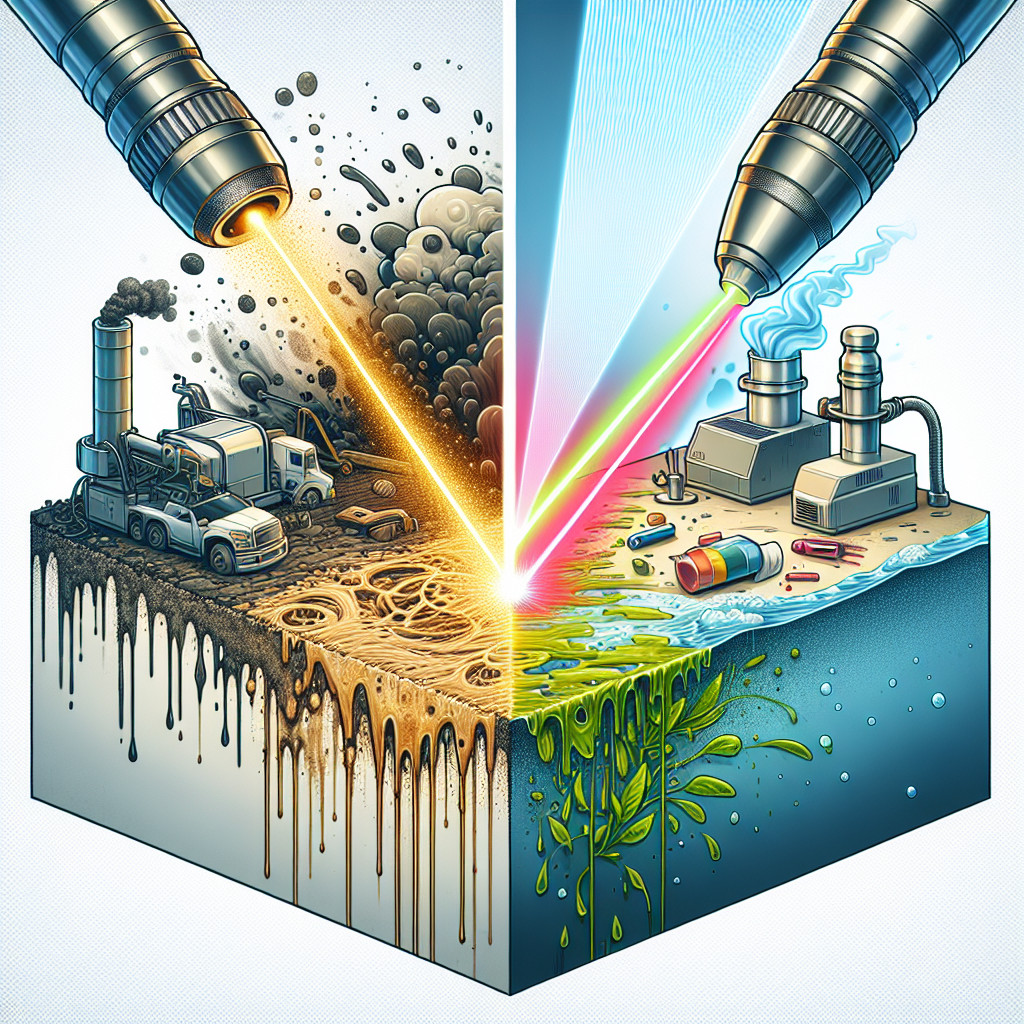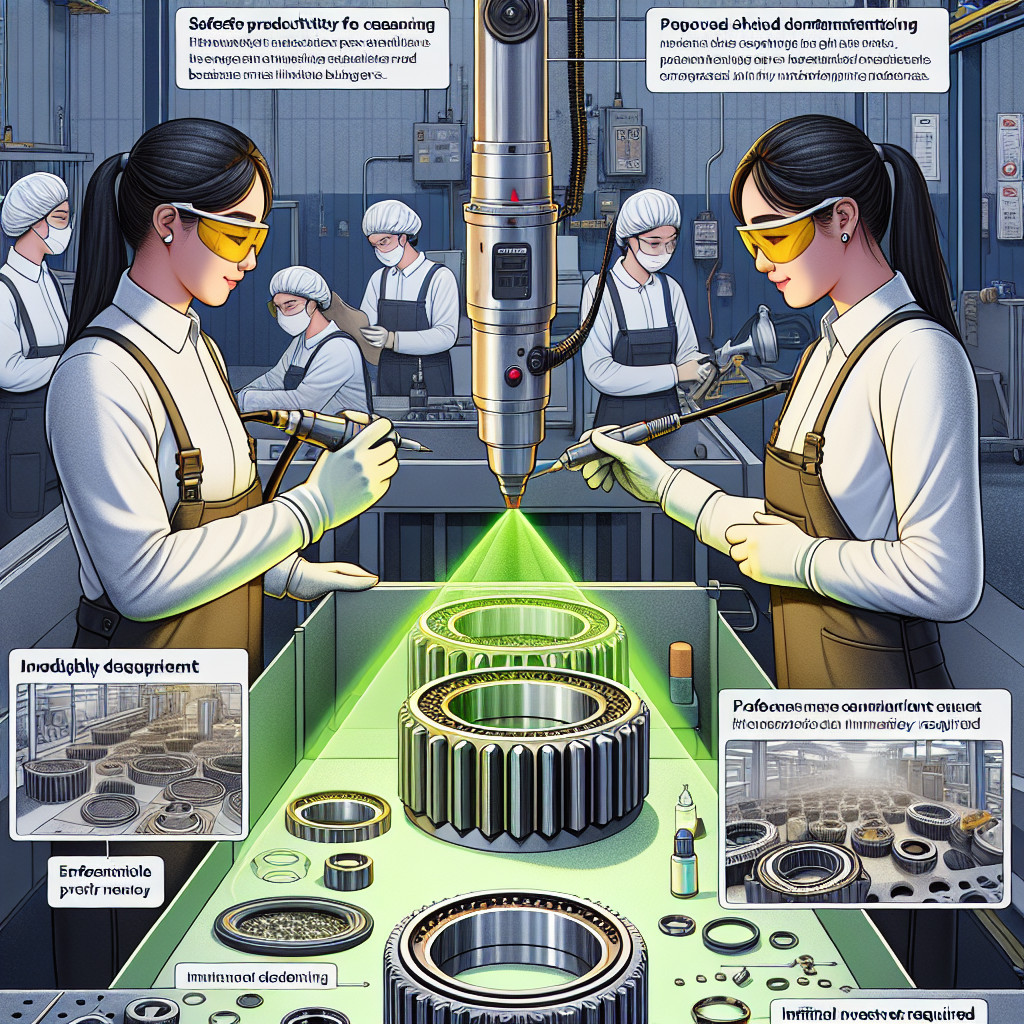- The use of laser cleaning in automotive manufacturing
- Laser cleaning for removing rust and corrosion from metal surfaces
- The role of laser cleaning in the electronics industry
- Laser cleaning in the construction industry
- Laser cleaning in the furniture manufacturing
- Applications of laser cleaning in the ceramic tile manufacturing
- Laser cleaning in the packaging industry
- Laser cleaning for removing scale and deposits from surfaces
The use of laser cleaning in automotive manufacturing
One of the key benefits of laser cleaning is its non-contact nature. Unlike abrasive cleaning methods that involve physical contact with the surface, laser cleaning uses high-intensity laser beams to remove contaminants. This eliminates the risk of surface damage or wear, ensuring that the integrity of the automotive components remains intact.
Another advantage of laser cleaning is its ability to remove a wide range of contaminants effectively. Whether it’s rust, paint, grease, or other stubborn residues, laser cleaning can efficiently eliminate them without leaving any residue behind. This ensures that the surfaces are thoroughly cleaned and ready for subsequent processes such as welding, painting, or coating.
Laser cleaning also offers a high level of precision and control. Manufacturers can adjust the laser parameters to target specific contaminants or areas, allowing for selective cleaning. This level of precision is particularly crucial in automotive manufacturing, where intricate components and complex geometries require meticulous cleaning.
Furthermore, laser cleaning is an environmentally friendly option. Traditional cleaning methods often involve the use of chemicals or abrasive materials that can be harmful to the environment. Laser cleaning, on the other hand, is a dry and chemical-free process, minimizing waste generation and reducing the carbon footprint of automotive manufacturing.
In addition to its cleaning capabilities, laser technology can also be used for surface preparation. Laser ablation, a process that involves removing a thin layer of material from the surface, can enhance adhesion for subsequent processes such as bonding or painting. By creating a clean and roughened surface, laser ablation improves the overall quality and durability of automotive components.
is not limited to the production line. It is also widely employed in maintenance and repair operations. Laser cleaning can effectively remove corrosion or paint from automotive parts, restoring them to their original condition. This eliminates the need for manual scraping or sanding, saving time and effort while ensuring a high-quality finish.
In conclusion, laser cleaning has become an indispensable tool in automotive manufacturing. Its non-contact nature, ability to remove various contaminants, precision, environmental friendliness, and surface preparation capabilities make it a preferred choice for manufacturers. As the automotive industry continues to evolve, laser cleaning technology will undoubtedly play a significant role in improving efficiency, quality, and sustainability.
Keywords: laser cleaning, automotive manufacturing, non-contact, contaminants, precision, surface preparation, environmentally friendly, maintenance, repair, efficiency, quality, sustainability.
Long-tail phrases:
– Laser cleaning technology in automotive manufacturing
– Advantages of laser cleaning in automotive industry
– Precision cleaning with laser technology
– Environmental benefits of laser cleaning in automotive manufacturing
– Laser cleaning for surface preparation in automotive industry
– Laser cleaning in automotive maintenance and repair
– Improving efficiency and quality with laser cleaning in automotive manufacturing
– The role of laser cleaning in sustainable automotive production.
Laser cleaning for removing rust and corrosion from metal surfaces
One of the key advantages of laser cleaning is its ability to remove rust and corrosion from complex and hard-to-reach areas. Traditional methods often struggle to reach these areas, leading to incomplete rust removal and potential future damage. Laser cleaning, on the other hand, can easily access these areas and ensure thorough removal of rust and corrosion, even in intricate designs or tight spaces.
Another advantage of laser cleaning is its ability to selectively remove rust and corrosion without affecting the surrounding metal. This is particularly important when dealing with delicate or valuable metal surfaces, where traditional methods may cause unintended damage. Laser cleaning allows for precise control, ensuring that only the rust or corrosion is removed, leaving the rest of the metal surface intact.
Furthermore, laser cleaning is a safe and environmentally friendly method of rust removal. Unlike chemical treatments, which often involve the use of toxic substances, laser cleaning does not require any additional chemicals or solvents. It is a dry process that produces minimal waste and does not release harmful fumes or pollutants into the environment. This makes laser cleaning a sustainable and eco-friendly choice for rust and corrosion removal.
In addition to its effectiveness and environmental benefits, laser cleaning also offers time and cost savings. Traditional rust removal methods can be time-consuming, requiring extensive preparation, manual labor, and post-treatment cleanup. Laser cleaning, on the other hand, is a fast and efficient process that requires minimal setup and reduces the need for manual labor. It can significantly reduce the overall time and cost associated with rust and corrosion removal, making it a cost-effective solution for industries and businesses.
In conclusion, laser cleaning has revolutionized the process of removing rust and corrosion from metal surfaces. Its non-contact, non-abrasive, and environmentally friendly nature make it a highly effective and efficient method. Laser cleaning can access hard-to-reach areas, selectively remove rust and corrosion, and ensure the safety and integrity of the metal surface. With its time and cost-saving benefits, laser cleaning is becoming increasingly popular in various industries. By adopting laser cleaning technology, businesses can prolong the lifespan of their metal surfaces, reduce maintenance costs, and contribute to a cleaner and greener environment.
Keywords: laser cleaning, rust removal, corrosion removal, metal surfaces, non-contact, non-abrasive, environmentally friendly, precise control, selective removal, time and cost savings, sustainable, eco-friendly.
Long-tail phrases:
– : a game-changer in the industry.
– The advantages of laser cleaning over traditional rust removal methods.
– How laser cleaning ensures thorough rust removal in hard-to-reach areas.
– The environmental benefits of laser cleaning for rust and corrosion removal.
– Laser cleaning: a cost-effective solution for industries and businesses.
– The impact of laser cleaning on the lifespan of metal surfaces.
– Laser cleaning: a sustainable choice for rust and corrosion removal.
– The efficiency of laser cleaning in reducing maintenance costs.
– Laser cleaning technology: a step towards a cleaner and greener environment.
The role of laser cleaning in the electronics industry
One of the main advantages of laser cleaning in the electronics industry is its ability to remove contaminants without causing any damage to the underlying material. Traditional cleaning methods, such as chemical cleaning or abrasive techniques, can often lead to surface damage or material loss. Laser cleaning, on the other hand, is a gentle and precise process that can be tailored to specific cleaning requirements.
Another advantage of laser cleaning is its versatility. It can be used to clean a wide range of materials commonly found in the electronics industry, including metals, ceramics, plastics, and glass. This makes it an ideal cleaning method for various electronic components, such as circuit boards, connectors, sensors, and optical devices.
Laser cleaning also offers several other benefits that make it a preferred choice in the electronics industry. Firstly, it is a dry cleaning process, which means that no additional cleaning agents or solvents are required. This eliminates the need for hazardous chemicals and reduces the environmental impact of the cleaning process. Additionally, laser cleaning is a fast and efficient method, allowing for high throughput and increased productivity.
Furthermore, laser cleaning can reach areas that are difficult to access using traditional cleaning methods. The focused laser beam can be directed precisely at the contaminated area, even in tight spaces or complex geometries. This ensures thorough cleaning and eliminates the risk of residual contaminants that could affect the performance or reliability of electronic devices.
In terms of cost-effectiveness, laser cleaning can provide long-term savings for electronics manufacturers. While the initial investment in laser cleaning equipment may be higher compared to traditional cleaning methods, the overall cost of operation and maintenance is often lower. Laser cleaning is a non-contact process, which means that there is minimal wear and tear on the equipment, reducing the need for frequent replacements or repairs.
In conclusion, laser cleaning plays a crucial role in the electronics industry by providing a safe, efficient, and precise cleaning method. Its ability to remove contaminants without causing damage to the underlying material, versatility in cleaning various materials, dry and environmentally friendly process, accessibility to hard-to-reach areas, and cost-effectiveness make it an ideal choice for electronics manufacturers.
Keywords: laser cleaning, electronics industry, contaminants, precision, non-contact, non-abrasive, surface damage, material loss, versatility, circuit boards, connectors, sensors, optical devices, dry cleaning, environmental impact, high throughput, productivity, cost-effectiveness, long-term savings, equipment maintenance.
Long-tail phrases: laser cleaning in the electronics industry, non-contact and non-abrasive cleaning technique, precision cleaning for electronic components, environmental-friendly cleaning method, cost-effective cleaning solution for electronics manufacturers.
Laser cleaning in the construction industry
Another significant advantage of laser cleaning is its versatility. It can be used on a wide range of materials, including concrete, metal, stone, wood, and even sensitive materials like glass and ceramics. This versatility makes laser cleaning an ideal choice for construction projects that involve multiple surface types. Whether it’s removing graffiti from concrete walls, cleaning rust from metal structures, or restoring the original appearance of stone facades, laser cleaning can tackle various cleaning challenges with ease.
Furthermore, laser cleaning offers exceptional efficiency and speed. The laser beams can cover large surface areas quickly, significantly reducing cleaning time compared to traditional methods. This efficiency translates into cost savings for construction companies, as fewer labor hours are required for cleaning tasks. Additionally, laser cleaning is an environmentally friendly option as it does not involve the use of chemicals or generate hazardous waste, making it a sustainable choice for construction projects.
In terms of safety, laser cleaning also excels. The process is non-toxic and does not produce harmful fumes or dust, ensuring a safe working environment for construction workers. Moreover, laser cleaning systems are equipped with advanced safety features, such as automatic shut-off mechanisms and protective enclosures, to prevent accidental exposure to laser beams.
The application of extends beyond surface cleaning. It can also be used for surface preparation, a crucial step in construction projects. Laser cleaning can effectively remove old coatings, paints, and adhesives, providing a clean and ready-to-use surface for subsequent treatments or applications. This saves time and effort compared to traditional methods that often involve manual scraping or the use of harsh chemicals.
In conclusion, laser cleaning has revolutionized the construction industry by offering a non-contact, versatile, efficient, and safe cleaning solution. Its ability to remove contaminants from various surfaces without causing damage makes it an invaluable tool for construction companies. The cost and time savings, along with the environmental benefits, further enhance its appeal. Laser cleaning is undoubtedly a game-changer in the construction industry, providing a cleaner and safer environment for both workers and the structures they build.
Keywords: laser cleaning, construction industry, non-contact, gentle, precise, versatile, efficiency, speed, cost savings, environmentally friendly, safety, surface preparation, contaminants, damage-free.
Long-tail phrases:
– Laser cleaning for delicate surfaces in construction.
– Benefits of .
– Laser cleaning vs. traditional cleaning methods in construction.
– Laser cleaning for surface preparation in construction projects.
– Environmental advantages of laser cleaning in construction.
– Safety features of laser cleaning systems in construction.
– Cost and time savings with laser cleaning in construction.
Laser cleaning in the furniture manufacturing
Another significant benefit of laser cleaning is its ability to remove even the toughest stains and coatings. Furniture manufacturing often involves the use of adhesives, paints, varnishes, and other coatings that can be challenging to remove. Laser cleaning, however, can effectively eliminate these substances without leaving any residue behind. This ensures that the furniture surfaces are thoroughly cleaned and ready for further processing or finishing.
Furthermore, laser cleaning is an environmentally friendly solution. Traditional cleaning methods often involve the use of harsh chemicals that can be harmful to both human health and the environment. Laser cleaning, on the other hand, is a chemical-free process that relies solely on the power of laser beams. This eliminates the need for hazardous substances, making it a safer and more sustainable option for furniture manufacturers.
In addition to its cleaning capabilities, laser technology can also be utilized for other purposes in the furniture manufacturing industry. For instance, laser engraving and marking have become popular techniques for adding intricate designs, logos, or serial numbers to furniture pieces. Laser cutting is another application that allows manufacturers to create precise and intricate shapes or patterns in various materials. These additional functionalities make laser technology a versatile tool that can streamline the entire furniture production process.
As with any advanced technology, laser cleaning does come with certain considerations. The initial investment in laser cleaning equipment can be significant, especially for small or medium-sized furniture manufacturers. However, the long-term benefits, such as improved efficiency, reduced maintenance costs, and enhanced product quality, often outweigh the initial investment.
In conclusion, laser cleaning has revolutionized the furniture manufacturing industry by offering a non-contact, precise, and environmentally friendly cleaning solution. Its ability to remove tough stains and coatings, along with its versatility for other applications, makes it an invaluable tool for furniture manufacturers. By adopting laser cleaning technology, manufacturers can enhance their production processes, improve product quality, and contribute to a more sustainable future.
Keywords: laser cleaning, furniture manufacturing, non-contact cleaning, precise cleaning, environmentally friendly, tough stains, coatings, laser engraving, laser marking, laser cutting, improved efficiency, reduced maintenance costs, enhanced product quality, sustainable future.
Long-tail phrases:
– Laser cleaning technology in furniture manufacturing
– Benefits of laser cleaning in the furniture industry
– Laser cleaning vs. traditional cleaning methods
– Environmental advantages of laser cleaning in furniture manufacturing
– Laser engraving and marking in furniture production
– Laser cutting for precise shapes in furniture manufacturing
– Cost considerations of adopting laser cleaning technology in furniture production.
Applications of laser cleaning in the ceramic tile manufacturing
One of the primary applications of laser cleaning in ceramic tile manufacturing is surface preparation. Before applying glazes or coatings, it is crucial to ensure that the tile surface is clean and free from any contaminants. Laser cleaning provides a non-contact and non-abrasive method to remove dirt, dust, oils, and other impurities from the tile surface. This ensures better adhesion of glazes and coatings, resulting in improved product quality.
2. Glaze removal:
In some cases, ceramic tiles may require glaze removal due to defects or the need for re-glazing. Laser cleaning offers a precise and controlled method to remove glazes without damaging the underlying tile surface. The laser beam selectively heats and vaporizes the glaze, leaving the tile intact. This process eliminates the need for harsh chemicals or mechanical scraping, reducing the risk of tile breakage and minimizing waste.
3. Tile restoration:
Laser cleaning also finds applications in tile restoration. Over time, ceramic tiles may accumulate stains, discoloration, or graffiti, diminishing their aesthetic appeal. Laser cleaning can effectively remove these unwanted marks, restoring the original appearance of the tiles. The laser beam targets the specific area, breaking down the contaminants without affecting the tile surface. This non-invasive method ensures that the restored tiles retain their structural integrity.
4. Mold cleaning:
Mold growth is a common issue in ceramic tile manufacturing, especially in humid environments. Traditional cleaning methods for mold removal often involve the use of chemicals, which can be harmful to workers and the environment. Laser cleaning provides a safe and eco-friendly alternative for mold cleaning. The high-intensity laser beam kills mold spores and removes mold stains without the need for chemicals, ensuring a healthier and safer working environment.
5. Quality control:
Laser cleaning plays a crucial role in quality control during ceramic tile manufacturing. By removing contaminants and defects from the tile surface, laser cleaning helps identify any imperfections that may affect the final product’s quality. This allows manufacturers to take corrective measures and ensure that only flawless tiles reach the market. Laser cleaning also enables real-time monitoring of the cleaning process, ensuring consistency and efficiency.
Keywords: laser cleaning, ceramic tile manufacturing, surface preparation, glaze removal, tile restoration, mold cleaning, quality control.
Long-tail phrases:
1. Non-contact and non-abrasive method for surface cleaning in ceramic tile manufacturing.
2. Precise and controlled glaze removal without damaging the tile surface.
3. Restoration of ceramic tiles by removing stains, discoloration, and graffiti using laser cleaning.
4. Eco-friendly mold cleaning in ceramic tile manufacturing.
5. Laser cleaning as a quality control measure in ceramic tile production.
In conclusion, laser cleaning has revolutionized the ceramic tile manufacturing industry by offering a range of applications. From surface preparation to glaze removal, tile restoration, mold cleaning, and quality control, laser cleaning provides a safe, efficient, and eco-friendly solution. With its precise and controlled cleaning capabilities, laser cleaning ensures that ceramic tiles meet the highest standards of quality and aesthetics.
Keywords: laser cleaning, ceramic tile manufacturing, surface preparation, glaze removal, tile restoration, mold cleaning, quality control.
Laser cleaning in the packaging industry
One of the key advantages of laser cleaning is its ability to remove contaminants without damaging the underlying surface. This is particularly crucial in the packaging industry, where delicate materials such as glass, plastic, and metal are commonly used. Laser cleaning can effectively remove dirt, grease, adhesives, coatings, and other contaminants without causing any physical damage or altering the integrity of the packaging material.
Moreover, laser cleaning offers a high level of precision and control. The laser beam can be precisely focused on the desired area, allowing for selective cleaning and targeting specific contaminants. This level of precision ensures that only the necessary areas are cleaned, minimizing waste and reducing the overall cleaning time.
In addition to its precision, laser cleaning also provides a fast and efficient cleaning process. The laser beam rapidly heats the contaminants, causing them to vaporize or disintegrate. This process, known as ablation, occurs within milliseconds, making laser cleaning significantly faster than traditional cleaning methods. As a result, manufacturers and packagers can achieve higher production rates and meet tight deadlines without compromising on cleanliness.
Furthermore, laser cleaning eliminates the need for chemical solvents or abrasive materials, making it a safer and more environmentally friendly option. Chemical solvents often pose health risks to workers and can contaminate the environment if not properly disposed of. Laser cleaning eliminates these risks, as it relies solely on the energy of the laser beam to remove contaminants. This not only ensures a safer working environment but also reduces the carbon footprint of the packaging industry.
The applications of are vast. It can be used to clean packaging equipment, such as conveyor belts, rollers, and molds, ensuring optimal performance and preventing product contamination. Laser cleaning can also be applied to remove labels, stickers, and ink from packaging materials, allowing for easy reusability or recycling. Additionally, laser cleaning can be used to prepare surfaces for printing or labeling, ensuring better adhesion and print quality.
In conclusion, laser cleaning has revolutionized the packaging industry by providing a fast, precise, and environmentally friendly cleaning solution. Its ability to remove contaminants without damaging the underlying surface makes it an ideal choice for delicate packaging materials. With its numerous advantages, laser cleaning has become an essential tool for manufacturers and packagers striving for higher standards of cleanliness and efficiency.
Keywords: laser cleaning, packaging industry, contaminants, precision, efficiency, non-abrasive, eco-friendly, non-contact, selective cleaning, ablation, production rates, chemical solvents, abrasive materials, safer working environment, carbon footprint, equipment cleaning, label removal, surface preparation.
Long-tail phrases: laser cleaning in packaging industry benefits, non-abrasive cleaning method, precision cleaning with laser, fast and efficient cleaning process, eco-friendly packaging cleaning, laser cleaning for delicate materials, selective cleaning with laser, laser cleaning for higher production rates, safer cleaning method in packaging industry, reducing carbon footprint with laser cleaning, laser cleaning for equipment cleaning, laser cleaning for label removal, laser cleaning for surface preparation in packaging.
Laser cleaning for removing scale and deposits from surfaces
The process of laser cleaning involves directing a laser beam onto the surface to be cleaned. The laser energy is absorbed by the scale or deposit, causing it to heat up rapidly and expand. As a result, the scale or deposit is detached from the surface and can be easily removed. The laser beam can be adjusted in terms of power, intensity, and duration to suit different types of scales and deposits, ensuring optimal cleaning results.
One of the key advantages of laser cleaning is its versatility. It can be used on a wide range of surfaces, including metals, ceramics, plastics, and even delicate materials like glass or stone. This makes it an ideal solution for various industries, such as automotive, aerospace, electronics, and restoration. Laser cleaning can effectively remove rust from metal surfaces, strip paint from car bodies, clean delicate electronic components, and restore historical artifacts without causing any damage.
Another significant advantage of laser cleaning is its non-contact nature. Unlike traditional cleaning methods that involve physical contact with the surface, laser cleaning eliminates the risk of scratches, abrasions, or other forms of damage. This is particularly important when dealing with sensitive or valuable materials where preservation is crucial. Laser cleaning ensures a gentle yet thorough cleaning process, leaving the surface intact and free from any residue.
Furthermore, laser cleaning is an environmentally friendly solution. It does not require the use of chemicals or abrasive materials, reducing the generation of hazardous waste. The process is also highly efficient, as the laser energy is focused only on the targeted area, minimizing energy consumption. This makes laser cleaning a sustainable and cost-effective choice for industries looking to reduce their environmental footprint.
In addition to its primary cleaning capabilities, laser cleaning also offers several secondary benefits. The intense heat generated by the laser beam can sterilize the surface, eliminating bacteria, viruses, and other microorganisms. This makes laser cleaning an excellent option for industries that require high levels of cleanliness, such as healthcare or food processing. Laser cleaning can also improve surface adhesion, preparing it for subsequent treatments like painting or coating.
In conclusion, laser cleaning has revolutionized the process of removing scale and deposits from surfaces. Its non-contact nature, versatility, and environmental friendliness make it a preferred choice across industries. Laser cleaning offers a gentle yet effective cleaning solution that preserves the integrity of the surface while ensuring optimal results. As technology continues to advance, laser cleaning is expected to become even more efficient and widely adopted.
Keywords: laser cleaning, scale removal, deposit removal, non-contact cleaning, environmentally friendly, versatile, surface preservation, efficient cleaning, rust removal, paint stripping, delicate materials, restoration, non-abrasive, sustainable, cost-effective, sterilization, surface adhesion.
Long-tail phrases:
– Laser cleaning for removing rust from metal surfaces
– Laser cleaning for stripping paint from car bodies
– Laser cleaning for delicate electronic components
– Laser cleaning for restoring historical artifacts
– Non-contact cleaning method using lasers
– Environmentally friendly scale removal technique
– Versatile laser cleaning for various surfaces
– Efficient and gentle cleaning with laser technology
– Laser cleaning for sustainable and cost-effective cleaning
– Sterilization benefits of laser cleaning
– Surface preparation for painting or coating using laser cleaning.
- Laser cleaning and long-term cost savings – cost analysis - February 29, 2024
- Laser cleaning and reducing emissions of harmful substances - February 28, 2024
- Can laser cleaning be used in veterinary medicine? - February 28, 2024



